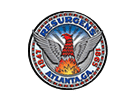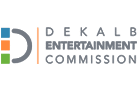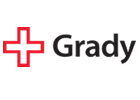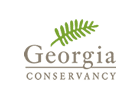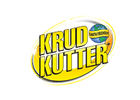By Jo Medico
Looking to drive targeted traffic to your site and maximize ROI? You’re in the right place. Let’s delve into the world of paid search and uncover its best practices.
Understanding Paid Search: Paid search is a potent online advertising method enabling you to display ads to users actively searching for products or services related to yours on search engines like Google and Bing.
Unlike organic search, where you earn rankings through content and optimization efforts, paid search lets you bid on keywords, paying only when someone clicks your ad. This precise targeting ensures your ads reach potential customers at the moment they’re seeking solutions.
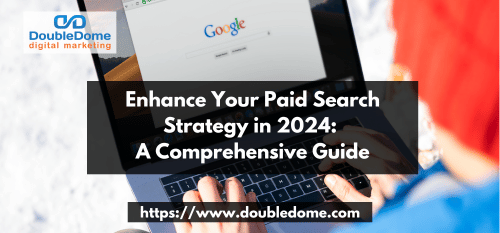
Why Paid Search Matters
Targeted Reach
Paid search allows you to bid on specific keywords relevant to your business, ensuring that your ads are displayed to users who are actively searching for products or services like yours. This targeted approach increases the likelihood of reaching potential customers who are already interested in what you offer, improving the effectiveness of your advertising efforts.
Budget Control
With paid search, you have full control over your advertising budget. You can set limits on how much you’re willing to spend, adjust bids for different keywords, and allocate funds to campaigns that are performing well. This level of control allows you to maximize the efficiency of your ad spend and ensure that you’re getting the most out of your marketing budget.
Complement Organic Efforts
While search engine optimization (SEO) is essential for long-term visibility and organic traffic growth, it can take time to see results. Paid search, on the other hand, delivers immediate visibility and can drive traffic to your website almost instantly. By complementing your SEO efforts with paid search advertising, you can generate immediate traffic and conversions while waiting for your organic rankings to improve. This dual approach ensures that you maintain a consistent presence in search engine results and maximize your overall online visibility.
Paid Search Best Practices
1. Select Relevant Keywords
This involves researching and choosing keywords that align with your business, products, or services. Relevant keywords ensure your ads appear to users actively searching for what you offer, increasing the likelihood of engagement and conversions. Tools like Google Keyword Planner or the Keyword Magic Tool can aid in comprehensive keyword research.
2. Regularly Review Keywords
It’s essential to continuously monitor and adjust your keyword strategy based on changes in consumer behavior, market trends, and competitor actions. Regular reviews ensure your campaign stays aligned with evolving search trends and remains competitive.
3. Harness Negative Keywords
Negative keywords are terms you exclude from your campaign to prevent your ads from appearing for irrelevant searches. By identifying and excluding irrelevant terms, you can optimize your spending and focus on targeting high-converting traffic.
4. Craft Compelling Ad Copy
Effective ad copy is crucial for grabbing attention, conveying your value proposition, and encouraging clicks. It should incorporate target keywords, feature clear calls-to-action (CTAs), and utilize ad extensions to provide additional information and value to users.
5. Refine Audience Targeting
Audience targeting involves tailoring your ads to specific demographics, interests, behaviors, and purchase history. Utilizing audience insights from tools like One2Target allows you to create more personalized and relevant ad experiences for different segments of your target audience.
6. Prioritize Conversions
Conversions represent the actions you want users to take, such as making a purchase or signing up for a newsletter. Prioritizing conversions involves setting up tracking, testing variations, and implementing remarketing tactics to maximize the effectiveness of your campaigns in driving desired actions.
7. Optimize Landing Pages
Landing pages play a crucial role in converting ad clicks into actions. Optimized landing pages align with ad intent, load quickly, and feature compelling CTAs, providing users with a seamless and relevant post-click experience.
8. A/B Test Ad Elements
A/B testing involves comparing different variations of ad elements (such as headlines, descriptions, or CTAs) to identify which performs best in terms of engagement and conversions. Testing allows you to iterate and optimize your ad creative for maximum effectiveness.
9. Monitor Competitors
Analyzing competitors’ strategies helps you gain insights into keyword opportunities, ad copy tactics, and overall campaign effectiveness. Understanding what your competitors are doing can inform your own approach and help you stay competitive in the market.
10. Improve Loading Speed
Page loading speed impacts user experience and can influence ad performance. By optimizing loading speed through techniques like reducing page elements and using content delivery networks (CDNs), you can enhance user satisfaction and potentially improve ad performance.
11. Avoid Cannibalization
Cannibalization occurs when your paid and organic listings compete for the same keywords, potentially wasting ad spend. Avoiding cannibalization involves identifying overlapping keywords and adjusting bidding or creating separate strategies to maximize visibility and efficiency.
12. Stay Updated
PPC is a dynamic advertising type, with new features, trends, and platforms emerging regularly. Staying informed about PPC changes and updates allows you to adapt and optimize your strategies to remain effective in the evolving landscape.
13. Set SMART Goals
Setting SMART (Specific, Measurable, Achievable, Relevant, Time-bound) goals helps provide clarity and direction for your paid search campaigns. SMART goals guide your planning, execution, and evaluation, ensuring your efforts align with overarching business objectives.
14. Monitor and Analyze Results
Monitoring and analyzing campaign results are essential for optimizing performance and achieving goals. By tracking key performance indicators (KPIs), segmenting data, and taking actionable insights from results, you can continuously refine and improve your paid search campaigns.
Conclusion
Mastering the intricacies of paid search is crucial for staying ahead in the ever-evolving digital landscape of 2024. By implementing the strategies outlined in this comprehensive guide, you can elevate your paid search campaigns to new heights, drive meaningful results, and achieve success in reaching your business objectives. Here’s to optimizing your paid search strategy for a prosperous year ahead!
Let our PPC experts help you revamp your Google Ads campaign. Talk to us today and let’s create a sensible ad campaign that will skyrocket your business!

